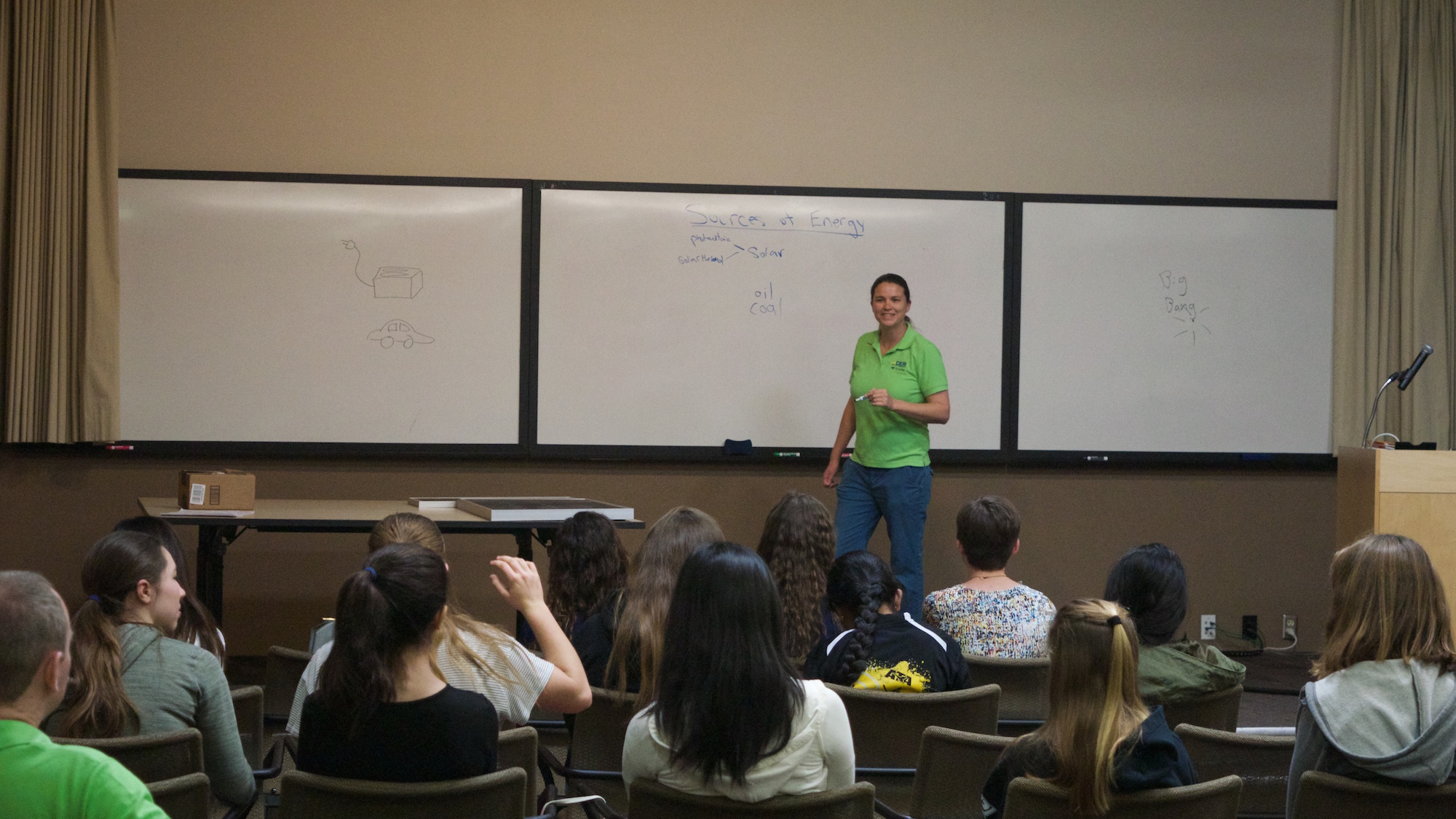CER Spotlight: Valerie Izzo
Associate Research Scientist, Fusion Theory and Computational Sciences Group at General Atomics
Quick Fun Facts:
Favorite International Destination:
Inis Meáin, the least populous of the Aran Islands off the west coast of Ireland. I’ve traveled there several times with my sister who has a PhD in Celtic languages. She likes to speak Irish with the locals; I speak no Irish, but I enjoy the remote, peaceful setting.
Favorite Food:
Anything chocolate.
Favorite Author:
G.K. Chesterton.
Describe your research:
 I do computational plasma physics research related to magnetic confinement fusion. To make a fusion reactor work, we need to confine a lot of heat in relatively small volume in order to allow enough fusion reactions to occur to produce energy. One challenge is to keep the steady rate of energy loss low enough that we don’t have to put more power in than we are getting out, but another challenge, which is the focus of my research, are the large instabilities that can essentially shut down the whole reactor, which we call disruptions. In these events, a lot of heat can be channeled to the reactor wall in a short time, potentially causing melting or other damage. When we can see a disruptive instability coming in the experiment, we can respond in ways that will prevent this damage. I run simulations of these scenarios and work with experimentalists on the DIII-D tokamak experiment at General Atomics to compare with their data. One major aim of the simulations is to be able to extrapolate results to larger fusion reactors, where the consequences of disruptions could be more severe.
I do computational plasma physics research related to magnetic confinement fusion. To make a fusion reactor work, we need to confine a lot of heat in relatively small volume in order to allow enough fusion reactions to occur to produce energy. One challenge is to keep the steady rate of energy loss low enough that we don’t have to put more power in than we are getting out, but another challenge, which is the focus of my research, are the large instabilities that can essentially shut down the whole reactor, which we call disruptions. In these events, a lot of heat can be channeled to the reactor wall in a short time, potentially causing melting or other damage. When we can see a disruptive instability coming in the experiment, we can respond in ways that will prevent this damage. I run simulations of these scenarios and work with experimentalists on the DIII-D tokamak experiment at General Atomics to compare with their data. One major aim of the simulations is to be able to extrapolate results to larger fusion reactors, where the consequences of disruptions could be more severe.
Tell us a bit about your path to get to your current position:
As an undergrad I studied physics, and my first experience with research was an experimental senior thesis project unrelated to plasma physics, which had to do with the orientation of crystals in the earth’s inner core. I studied plasma physics starting in grad school at the University of Washington, but I joined an experimental research group and thought that was what I would do. It was my advisor in my second year who suggested I begin working on a computational project, although I remained in the experimental group, working in collaboration with the experimentalists. After grad school, I continued along this line as a post-doc at MIT, working for an experimental advisor on a computational project. When I came here to CER, and began working in the Fusion Theory group at General Atomics, it was the first time I worked in a group of other theorists. But, I think I’ve retained to ability to collaborate well with experimentalists because of my training.
What is a typical day at work like?
As a computational physicist, I do spend a lot of my time at the computer. My work extends from writing and testing new code to capture new physics effects in my modeling, to setting up and running simulations, to analyzing and visualizing results to understand what they mean and how they connect to results from experiments, then finally writing journal articles, and preparing conference presentations to communicate these results. On a given day, I may be working on a combination of any of these. And of course, there are always plenty of meetings to attend.
What do you think a lay person with little to no scientific training might find most fascinating about your work?
Fusion energy research is right on the verge of producing the first net-power-out experiment, called ITER, which is under construction right now in France. Nearly all the sources of energy we use on earth right now come directly or indirectly from the sun, which produces energy by nuclear fusion. So, in trying to make a fusion reactor work on earth, we are basically just cutting out the middlemen.
What are some of the challenges for researchers in your field?
Since experimental fusion reactors are large, expensive devices, you might think that there are comparatively hardly any costs associated with running simulations. But my simulations are typically run on thousands of processors of a supercomputer for dozens of hours each, and there’s a lot of demand for a limited amount of run time on supercomputers. We have to be very selective in planning out what simulations to run, similar to planning experiments.
What is something your colleagues might be surprised to know about you?
I’m an Altar server at daily Mass every morning at 7am, and on Sundays I teach classes for people who want to become Catholic.
Do you have any advice for someone looking to get into your field?
It helps to look for research opportunities as early as you can during your education. Different types of research are better suited to different personality types.
